I’ll be honest: no matter how many castles I visit, there’s always a moment that gets me. Sometimes it’s the quiet creak of a wooden door at Windsor, or the sting of salty air at Dover as the fog creeps in. One morning, I found myself staring up at Bodiam Castle, ducks gliding across its moat, half-expecting a knight to stroll across the bridge.
England’s castles aren’t just about old stones—they’re snapshots of drama, romance, and survival. Some hide secret tunnels and stories of ghostly guests. Others open their gardens to picnics and laughter on sunny afternoons. If you want history you can touch (and plenty of surprises along the way), this guide is for you.
Let’s step inside ten of the most unforgettable castles in England—and I promise, each one will leave you with something to remember.

Quick Reference Table
| 🏰 Castle | 📍 Location | 🕰️ Era | 🎭 Famous For | 🌟 Fun Fact |
|---|---|---|---|---|
| Windsor Castle | Windsor, Berkshire | 11th Century | Longest-occupied royal residence | Queen Elizabeth II’s final resting place |
| Dover Castle | Dover, Kent | 11th Century | Key stronghold guarding the English coast | Secret WWII tunnels hidden beneath the grounds |
| Warwick Castle | Warwick, Warwickshire | 11th Century | Dramatic battles, family days out | Hosts medieval jousting and live events |
| Leeds Castle | Maidstone, Kent | 12th Century | “The Loveliest Castle in the World” | Once owned by six medieval queens |
| Bamburgh Castle | Bamburgh, Northumberland | 11th Century | Spectacular coastal setting | Used as Hogwarts in Harry Potter films |
| Alnwick Castle | Alnwick, Northumberland | 11th Century | Grand stately home, film location | Featured as Hogwarts in the first two Harry Potter movies |
| Bodiam Castle | Robertsbridge, East Sussex | 14th Century | Fairytale moat and towers | Built for show as much as defence |
| Tintagel Castle | Tintagel, Cornwall | 13th Century | Arthurian legend and clifftop ruins | Linked to the legend of King Arthur’s birthplace |
| Arundel Castle | Arundel, West Sussex | 11th Century | Magnificent gardens and festivals | Still lived in by the Duke of Norfolk’s family |
| Tower of London | London | 11th Century | Crown Jewels, royal prison, executions | Home to the legendary ravens |

Windsor Castle

The first time I glimpsed Windsor Castle, it was from a train window on a grey afternoon. The round tower loomed above the trees—solid, familiar, almost reassuring in its stubbornness against time. That feeling stuck with me as I wandered up the Long Walk later, boots crunching on gravel, and watched the Union Flag flutter above the ramparts.
Windsor Castle isn’t just famous; it’s alive with the footsteps of royalty, guards, and curious visitors from all over the world. Founded by William the Conqueror back in the 11th century, this place has watched nearly a thousand years of history roll by—coronations, weddings, sieges, even the odd royal scandal. It’s still the official home of the King, and if you’re lucky, you’ll see the Royal Standard flying to show he’s in residence.
What I love most about Windsor, though, is its ability to surprise. The outside is every inch a fortress—massive stone walls, arrow slits, and that iconic Round Tower. Step inside, and suddenly you’re surrounded by jaw-dropping grandeur: the lavish State Apartments glittering with art, St George’s Chapel quietly echoing with ancient prayers (and yes, the final resting place of Queen Elizabeth II).
Kids will love the ceremonial guards and the sheer scale of it all. For anyone with a soft spot for royal stories, this place is pure gold. Don’t miss the Changing of the Guard—there’s something a bit stirring about the marching feet and the flash of scarlet uniforms, even if you’re not a royalist.
👉 If you want a deeper look at royal history, hidden highlights, and visiting tips, check out our full Windsor Castle England Guide for everything you need to plan the perfect day.
Travel Tips:
- Early birds win: Windsor Castle draws crowds. Arrive right when the gates open, or pop in after 2 p.m. when the rush dies down.
- Mind the royal schedule: Check if the King is in residence (the Royal Standard flag will be flying)—it’s a fun detail, but certain areas might close for royal events.
- Changing of the Guard: It’s not every day you get to see the red coats and brass bands—usually around 11 a.m., but check the schedule before you go.
- Kids in tow? There’s plenty for them: soldiers, towers, armour, and the thrill of being somewhere real-life kings and queens actually lived.
- Best seasons: Spring and early autumn have fewer crowds and blooming gardens. Winter is magical, but short days mean less time inside.
- Don’t rush it: You’ll want at least three hours—longer if you fancy the State Apartments or a stroll down to the river.
- Lunch with a view: The town has some great little pubs and tearooms just a few minutes’ walk from the castle gates—perfect for a pint or a cream tea.
- Book ahead: Buy tickets online on the official website for better prices and a quicker entry (especially handy on busy weekends).
- Tickets & Tours: Tickets sell out fast during peak season—make your booking as soon as possible. Audio guides are free and worth grabbing for extra stories.
- Website: www.rct.uk/visit/windsor-castle

Dover Castle

I’ll never forget my first steps up to Dover Castle, the wind snapping at my coat and the smell of salt sharp on the air. Perched high above the Channel, this place doesn’t just watch over the coast—it feels like it owns the sky itself. Long before you reach the gates, those thick stone walls and commanding towers send a clear message: Dover Castle was built to face down invaders and storms alike. Even now, you get the sense you’re standing on the edge of something big—where England’s story collides with legend and real danger.
Dover Castle has guarded England’s front door for nearly 1,000 years. William the Conqueror’s builders laid the first stones, but the fortress grew with each generation, layering Roman, medieval, and wartime secrets into its chalky cliffs. The Great Tower—proud, stark, and full of echoes—once hosted royal banquets and siege councils. If you have a good imagination, you can almost hear the clatter of dishes and the worried whispers before a battle.
But Dover’s not just about Norman kings and moats. Dig deeper (sometimes literally), and you’ll find the secret wartime tunnels—hidden deep in the cliffs—where Operation Dynamo was masterminded. These tunnels saved thousands at Dunkirk. Touring them, I felt a chill, knowing how close Britain came to disaster, and how these cramped spaces were once the front lines of hope.
The views are worth the trip alone. From the battlements, you get one of England’s finest panoramas—green hills rolling behind you, the wild sea stretching out ahead, and the White Cliffs shining in the sun or brooding under storm clouds.
Dover Castle is a storyteller’s dream, packed with hidden corners and real history you can touch.
Travel Tips:
- Wear your walking shoes: There’s a lot of ground to cover—towers, tunnels, steep slopes, and open fields.
- Tunnels are a must: Book your Secret Wartime Tunnels tour as soon as you arrive; spots fill up fast, and you don’t want to miss this.
- Weather watch: The wind up here is legendary, even on sunny days. Bring a jacket (or at least something to keep your hair from flying).
- Picnic potential: The grounds are perfect for a picnic—pack your own, or grab snacks at the café and enjoy the views.
- Best time to visit: Spring or early autumn for wildflowers and mild weather. Avoid summer weekends if you can; coachloads of day-trippers tend to swarm the place.
- Arrive early: The castle is huge, and you’ll want time for both the Great Tower and the underground adventures.
- Families welcome: Kids will love the tunnels and medieval displays, and there’s plenty of room to run and play.
- Parking: There’s a decent car park on-site, but it can fill up during school holidays.
- Tickets & Tours: Advanced tickets recommended, especially if you want a slot on the tunnels tour. Guided tours run daily and add great context.
- Website: www.english-heritage.org.uk/visit/places/dover-castle

Warwick Castle
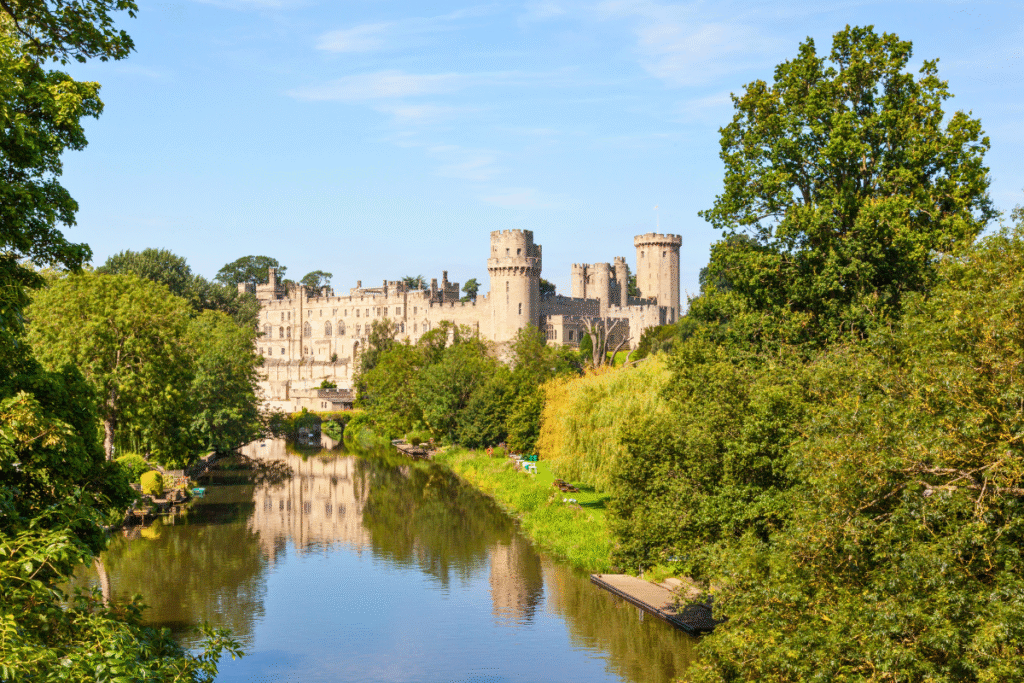
If you ever want to see history come roaring to life, spend an afternoon at Warwick Castle. I remember arriving on a sunny day and being greeted by the unmistakable clang of a blacksmith’s hammer and the scent of woodsmoke drifting from the courtyard. Families wandered past archers in full costume, and a medieval falconer’s eagle swooped overhead, drawing gasps from the crowd. No matter how old you are, it’s impossible not to feel swept up in the spectacle.
Warwick Castle has stood on its riverside cliff for over 950 years. Originally raised by William the Conqueror, it grew into a formidable fortress and later, a lavish residence for some of England’s most powerful families. Its stone walls have seen sieges, banquets, royal visits, and even the odd scandal (just ask about the Earls of Warwick).
What’s special about Warwick is how alive it feels. Inside the towers, costumed actors recreate everything from bloody battles to ghost stories, and the dungeons rattle with special effects. If you’re lucky, you might catch the firing of the mighty trebuchet, or witness birds of prey skimming low over the river Avon.
The castle’s gardens and peacock-filled grounds are a treat too, especially if you need a quiet breather after all the excitement. And trust me—if you’re visiting with kids, they’ll be talking about Warwick for weeks.
Travel Tips:
- Book tickets early: Warwick is hugely popular, especially during school breaks and summer weekends.
- Shows & events: Check the daily schedule for jousts, falconry, and siege engine demos. Some attractions cost extra but are worth it.
- The dungeons: Spooky, loud, and not for the faint of heart (or very young children). They’re a hit with teens and older kids.
- Gardens & picnics: Don’t miss the rose gardens and riverside walks. There’s plenty of space for a picnic or a quiet wander.
- Overnight stays: Want the full medieval experience? Consider booking a night in the Knight’s Village—glamping tents and lodges right on the castle grounds.
- Rain or shine: Most activities run whatever the weather, but the grounds can get muddy, so bring good shoes.
- Arrive early: There’s a lot to see—plan for most of the day if you want to explore properly.
- Parking: On-site parking is available for a fee; follow the signs as you approach town.
- Tickets & Tours: Booking online is usually cheaper, and some experiences (like the dungeons) require separate tickets.
- Website: www.warwick-castle.com

Leeds Castle

There’s something almost storybook about the first glimpse of Leeds Castle, rising from its own island and mirrored in a peaceful moat. My last visit was on a misty morning, swans drifting across the water, the castle’s pale stone glowing gold in the early sun. It’s the sort of place you half expect to find tucked inside a childhood fairy tale, but with enough real history and surprises to keep even seasoned travellers on their toes.
Known as “the loveliest castle in the world,” Leeds has been home to six queens, a Tudor king or two, and even a wealthy socialite who once threw legendary Gatsby-style parties here. The rooms inside are bright, elegant, and far more comfortable than most English castles—a reflection of the place’s long tradition as a royal residence rather than a stark fortress.
The grounds are just as delightful as the interiors. There are secret gardens full of roses, wild woodland paths, a hedge maze that’s trickier than it looks, and a playful adventure playground for younger explorers. Leeds Castle hosts events all year—open-air theatre, food festivals, and even classic car shows—so there’s always something new to discover.
On sunny afternoons, I like to sit by the water’s edge and watch the resident black swans patrol their kingdom. It’s easy to lose track of time here.
Travel Tips:
- Arrive early or late: Mornings and late afternoons are quieter. Midday, the main entrance and maze can get busy, especially on weekends.
- Explore the maze: It’s a must, but keep your wits—finding the centre isn’t as easy as it looks!
- Events & exhibitions: Check the calendar before your visit; special events can make for a unique day out, but might also mean bigger crowds.
- Perfect for families: Kids love the playground, falconry displays, and feeding the ducks by the moat.
- Picnic spots: Bring a blanket—there are lovely places to picnic by the water or under the ancient trees.
- Overnight stays: Leeds offers beautiful B&B rooms and even luxury glamping if you want to soak in the atmosphere after closing time.
- Best seasons: Spring brings colourful gardens, summer is lively with events, and autumn means gorgeous foliage all around the castle.
- Parking: Ample parking available on site, just follow the signs as you approach.
- Tickets & Tours: Entry tickets include many of the main attractions, but some special events or activities cost extra. Guided tours are offered daily.
- Website: www.leeds-castle.com

Bamburgh Castle

Some places just catch you off guard. The first time I spotted Bamburgh Castle, I was driving the coastal road, thinking more about lunch than legends, when it just appeared—perched above the waves, battered by wind, looking like it was holding the whole wild coastline together. I remember pulling over, window down, just listening to the rush of the sea and the gulls.
Bamburgh feels almost unreal. You look up at those stone walls and imagine all the centuries that have swept through here—Vikings raiding, medieval kings scheming, the noise of battles, and the silence that follows. Walk through the huge gates and it’s a different world: chilly stone passageways, sunlight slanting through old glass, and rooms stacked with armour, battered flags, and the odd quirky treasure (there’s even a mini museum about aviation).
But honestly, what gets me every time isn’t just the history—it’s that view from the ramparts. You see miles of golden beach and crashing surf. The wind will steal your hat, and the smell of salt sticks with you all day. If you’re lucky and the tide’s right, you can walk down to the sand and have most of it to yourself. Kids usually end up racing down the dunes before you can stop them.
Travel Tips:
- Layers, layers, layers: It’s nearly always windy, and the breeze can be icy, even in July.
- Best light: Early morning or just before sunset for photos that look straight out of a movie.
- Bring the family: There’s space for kids to let loose—beach, cannons, towers, and all.
- Special events: Check their website. Sometimes you’ll stumble onto a jousting demo or a pop-up market.
- Dogs: Allowed on the beach year-round, and there’s room to roam outside the castle too.
- Beach combing: Don’t miss the low tide. Shells, stones, maybe even a bit of sea glass for your pocket.
- Snack stop: There’s a small café on site, but local pubs in the village are cosy if you need something heartier.
- Parking: Car park right below the castle, but it does get busy on sunny days and school holidays.
- Tickets & Tours: Booking online is easy and lets you skip the queue at the gate. Guided tours run seasonally—ask at the entrance.
- Website: www.bamburghcastle.com

Alnwick Castle

If you grew up with books full of wizards or watched movies where castles stole the show, you might already know Alnwick—even if you’ve never set foot in Northumberland. My first time here, I was almost distracted by the crowds taking selfies on the same lawns where Harry Potter learned to fly. But step past the famous scenes, and you’ll find there’s much more to Alnwick than film credits and broomsticks.
This castle is still lived in by the Duke of Northumberland’s family—a proper, lived-in stronghold that feels as much like a home as a fortress. The exterior towers and battlements look straight out of a fantasy epic, but inside, you’ll find beautiful state rooms filled with paintings, gilded ceilings, and centuries-old books. Each turn seems to reveal another surprise, from medieval cellars to secret gardens.
The grounds are a real highlight. There’s the Poison Garden (which is every bit as mysterious as it sounds), the grand treehouse restaurant perched among the branches, and plenty of space to stretch your legs or let kids burn off some steam.
Alnwick Castle pulls off a neat trick: you can geek out over your favourite movie moments, soak up real English history, or just relax in the sunshine with ice cream and views of rolling green hills.
Travel Tips:
- Arrive early: It’s a top spot for school trips and tour buses—mornings are usually calmer.
- Potter fans: Go ahead and take the broomstick-flying lesson or spot the filming locations, but don’t miss the staterooms and exhibitions.
- Garden tickets: The castle gardens are ticketed separately but absolutely worth it, especially if you love plants or unique landscapes.
- Treehouse treat: Book ahead if you want to eat in the famous treehouse restaurant—it’s popular for a reason.
- Family friendly: There are often kids’ activities, archery, dressing up, and outdoor games. Perfect for restless young explorers.
- Plan for weather: Much of the site is outdoors, so pack a raincoat just in case.
- Stay a while: The market town of Alnwick has bookshops, cosy pubs, and even a massive second-hand bookstore inside an old train station.
- Parking: Plenty nearby, but follow the signs—there’s usually a bit of a walk from the car park to the entrance.
- Tickets & Tours: Online booking saves time and is usually cheaper; combo tickets are available for the castle and gardens.
- Website: www.alnwickcastle.com

Bodiam Castle
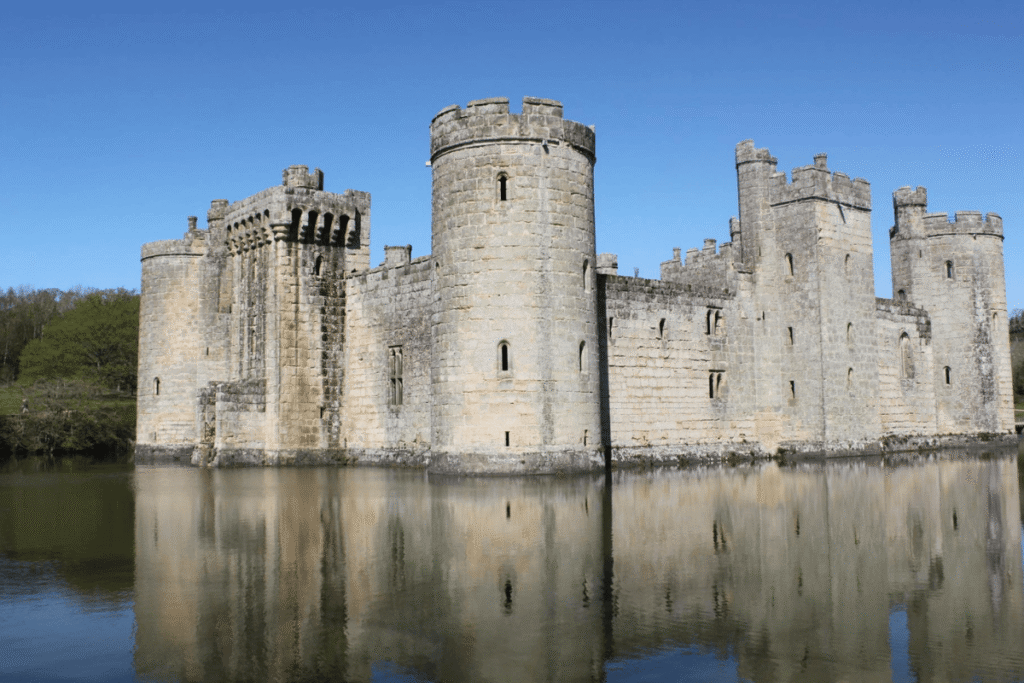
The first time I glimpsed Bodiam Castle, I honestly thought I’d stumbled onto a film set for a fairytale. It’s the kind of place that stops you in your tracks—tall towers and thick walls rising straight out of a broad, glassy moat, with nothing but water lilies and the odd duck breaking the surface. There’s no grand town nearby, just Sussex fields and a quiet country road that winds you back in time.
Bodiam isn’t about royal pageantry or grand state rooms. This one is a classic medieval stronghold, built for both show and defence in the 14th century—an old knight’s dream of how a proper fortress should look. Walking across the wooden bridge toward the gatehouse, you can almost picture horses splashing through the moat and the distant clang of armour in the courtyard.
Inside, the castle is mostly open to the sky now, with grass where floors once stood and stairways leading up to broken towers. It’s not hard to find a quiet spot to sit, close your eyes, and let your imagination wander. Kids love peering through arrow slits or climbing the spiral staircases, while history fans can spot details like the old well, murder holes, and the outlines of once-grand fireplaces.
If you want a classic castle scene—moat, towers, and a sense of mystery—Bodiam never disappoints.
Travel Tips:
- Perfect for a picnic: The grounds are made for lazy lunches; bring a blanket and enjoy the view of the castle reflected in the water.
- Arrive early: Weekends get busy, especially on sunny days, so aim for morning if you want photos without crowds.
- Wear sturdy shoes: The ground can be muddy, and the stairs are steep—medieval builders weren’t thinking about trainers!
- Family favourite: Kids love exploring the ruins, spotting fish in the moat, and running around the grassy bailey.
- Scenic approach: The walk from the car park gives you that first, magical view—don’t rush it.
- Bring your camera: Early morning mist or late afternoon sun make for dreamy photos.
- Teahouse nearby: There’s a cosy café by the entrance, perfect for a scone or warming cuppa after your adventure.
- Parking: A pay-and-display car park is a short walk away—follow the signs as you arrive.
- Tickets & Tours: Book online for a small discount, or use your National Trust membership for free entry. Guided tours are offered on weekends and school holidays.
- Website: www.nationaltrust.org.uk/visit/sussex/bodiam-castle

Tintagel Castle
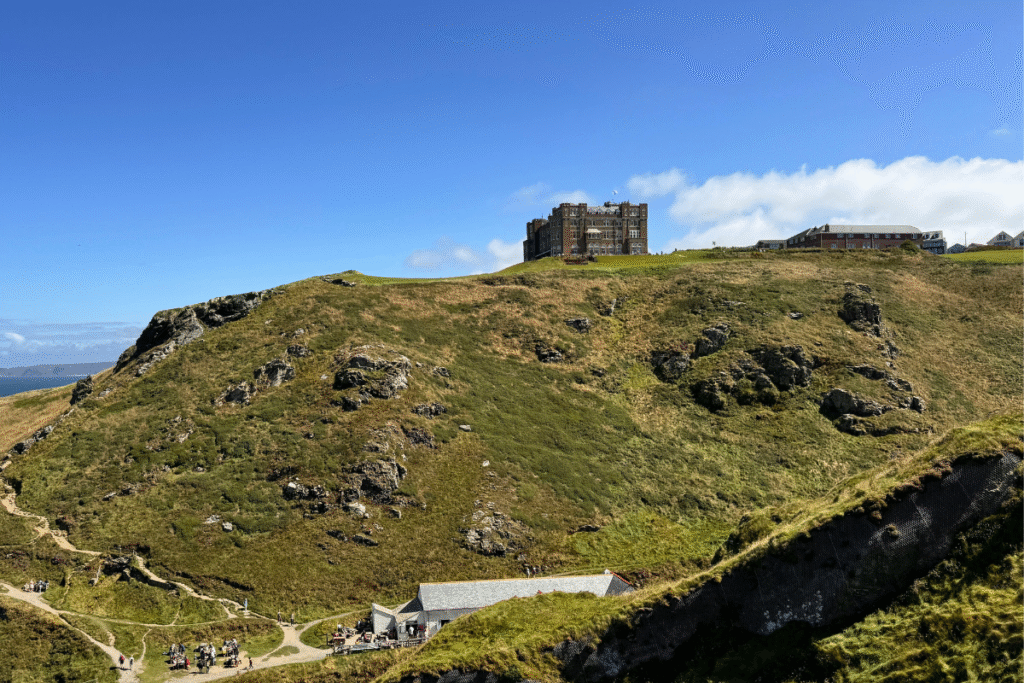
There aren’t many places in England where myth and reality blur quite like they do at Tintagel. I remember standing at the edge of those craggy Cornish cliffs, with gulls wheeling overhead and the wind roaring so loudly I had to shout just to be heard. It’s wild country—raw, dramatic, and somehow ancient, as if the stones themselves are keeping secrets.
Most people come to Tintagel because of the legends—King Arthur’s birthplace, Merlin’s cave, and all the stories spun over centuries. But what struck me was just how rugged and spectacular the setting really is. The ruins cling to a rocky headland, half-lost to time, with narrow bridges and steep staircases that test your legs (and your nerve).
Exploring here feels less like a tour and more like an adventure. At low tide, you can wander down to the beach and peer into Merlin’s Cave, or just sit and watch the surf explode against the rocks. Higher up, the castle’s broken walls frame wild views over the Atlantic. It’s easy to see why poets, painters, and daydreamers have been drawn to this spot for generations.
If you love a good legend—or just want to feel like you’re on the edge of the world—Tintagel is the place.
Travel Tips:
- Wear good shoes: The climb is steep and there are lots of steps—don’t attempt it in flip-flops.
- Weather watch: Bring a jacket, whatever the forecast; the wind and rain can change in a flash.
- Best time to visit: Early mornings or late afternoons are quieter and the light is gorgeous for photos.
- Bring water: There’s a bit of a trek from the village, and you’ll want to explore every nook.
- Merlin’s Cave: Check the tide times—low tide is your best bet for a safe wander inside.
- Family adventure: Older kids love scrambling around the ruins, but watch out for drops and uneven ground.
- Village treats: Tintagel village has plenty of spots for pasties, cream teas, or a pint after your climb.
- Parking: Main car park is in the village—a 10–15 minute walk to the castle entrance.
- Tickets & Tours: Buy tickets in advance during summer—numbers are sometimes limited. Guided tours are available, or pick up an audio guide for extra stories.
- Website: www.english-heritage.org.uk/visit/places/tintagel-castle

Arundel Castle

You don’t really “find” Arundel Castle by accident—it kind of finds you. The first time I visited, I remember slowing down as the stone walls rose up out of nowhere, breaking up the gentle Sussex hills. There’s nothing subtle about it. Even from the car park, the castle feels huge, a proper landmark that’s stood here for centuries, keeping an eye on everything.
What surprised me most wasn’t just how grand it looks, but how lived-in and friendly it feels. I wandered through the halls half-expecting to get lost, but instead found old portraits, big fireplaces, and rooms full of sunshine and creaky wooden floors. The staff actually smiled and shared a few odd facts (did you know the same family’s been here for generations?). Outside, I just took my time. The gardens are overflowing with flowers—one gardener pointed out a rare iris I’d never even heard of.
And here’s the thing: you don’t need to rush. Find a bench, stare at the rooftops and the river, and listen for the bells. If you’re like me, you’ll end up wishing you’d packed your lunch so you could sit out a little longer.
Travel Tips:
- Check for events: Jousting tournaments and flower shows are local legends. If you want the quieter side, weekdays are your best bet.
- Explore the gardens: They’re a highlight—especially in spring, when everything’s in bloom.
- Families: Kids can run wild on the lawns or join in on one of the scavenger hunts (ask at the gate).
- Views from the top: If your legs are up for it, climb the keep. You’ll see for miles on a clear day.
- Bring snacks: There’s a café, but a picnic by the river feels extra special.
- Don’t miss the little stuff: Some rooms are filled with tiny treasures—look for old armour, weird clocks, and odd family photos.
- Arrive early: Parking’s easier, and you’ll have more space in the gardens.
- Town wander: The village of Arundel is worth a stroll, especially if you fancy an ice cream or poking around antique shops.
- Tickets & Tours: Tickets can be bought online and sometimes include special event access. Guided tours run on select days—check the schedule.
- Website: www.arundelcastle.org

Tower of London

There’s something about the Tower of London that grabs you the minute you cross the old moat—even if you’ve been before, it never feels the same twice. My last visit was on a rainy Tuesday, puddles shining in the courtyard and ravens strutting around like they owned the place. I stood by the Traitors’ Gate, just listening to the low murmur of tour groups and imagining the footsteps of all those who’d come here through the centuries—some in chains, some in ermine, all with their own stories.
The Tower’s history is heavy and sometimes brutal: royal palace, prison, armoury, and execution ground all rolled into one. It’s no surprise this place is a UNESCO World Heritage Site—its walls have seen some of the most pivotal moments in British history. You can see the Crown Jewels glittering behind thick glass, peer into gloomy cells, or watch the Yeoman Warders (the famous “Beefeaters”) swapping stories by the old stone walls. And of course, the ravens—legend has it if they ever leave, the kingdom will fall, so the staff keep them very well fed.
But what really gets me is how the place buzzes with energy. Kids press their noses to the windows, history buffs debate the mysteries of the princes in the Tower, and there’s always someone pausing to look up at the White Tower, lost in thought.
Travel Tips:
- Beat the queues: Buy your ticket online and arrive early—the line for the Crown Jewels gets long, fast.
- Yeoman Warder tours: Join one if you can. They’re funny, sharp, and know all the best stories.
- Plan your time: There’s more to see than you think—set aside half a day if you want to explore without rushing.
- For kids: There’s plenty for young visitors, from armour displays to old graffiti and a few genuinely spooky tales.
- Weather ready: A lot is outside or in chilly stone towers, so pack a jacket or umbrella just in case.
- Mind the ravens: They’ll eye your snacks and pose for photos, but don’t try to pet them!
- Take your time: Some of the quietest corners—like the Chapel of St. Peter ad Vincula—are the most powerful.
- Easy access: The Tower is right by Tower Hill tube station, with plenty of cafés and shops nearby for a post-visit break.
- Tickets & Tours: Advanced booking is a must in high season; tours with Beefeaters run frequently and are a highlight.
- Website: www.hrp.org.uk/tower-of-london

Travel Tips for Castle Lovers
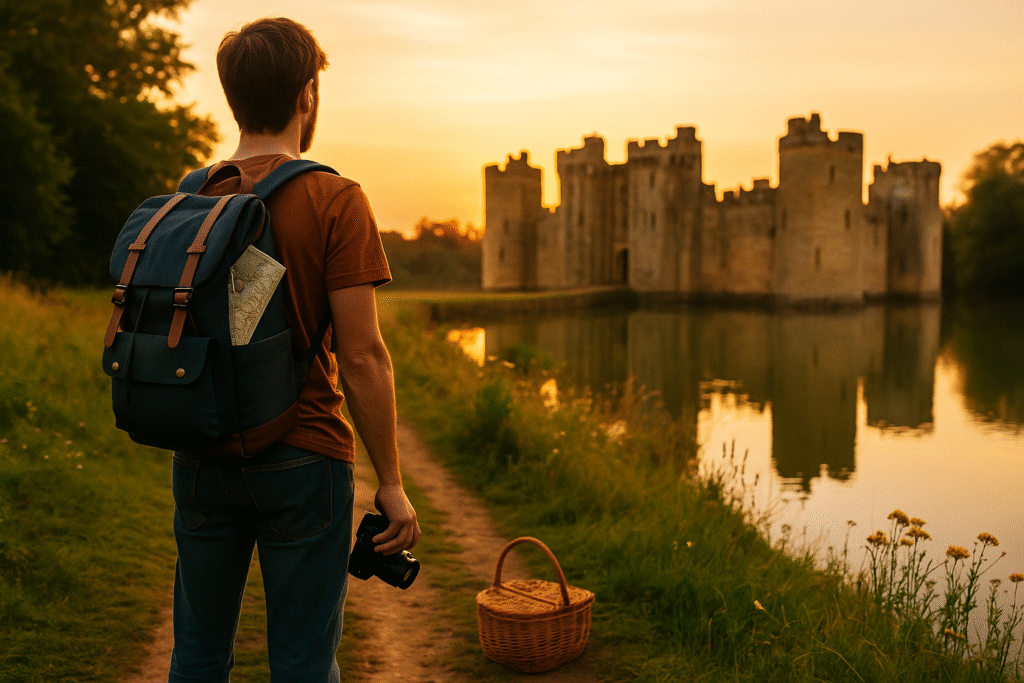
Visiting the best castles to visit in England is about more than just following a map—it’s about the small moments and clever choices that turn a good trip into a great one. If you’re serious about getting the most out of your castle adventures, here are a few extra tips you won’t always find in the guidebooks:
Mix It Up:
Don’t just stick to the famous names. Big icons like Windsor and the Tower are unmissable, but try to balance them with a few “hidden gem” castles nearby (Sussex and Northumberland are full of surprises). It gives you a real taste of variety—grand, ruined, family-run, or off-the-beaten-track.
Memberships Save Money:
If you’re planning to visit more than two or three castles, consider getting an English Heritage or National Trust membership. The cost adds up quickly otherwise, and members often get parking perks, discounts in the tearooms, and even early entry at some sites.
Go Beyond the Walls:
Make time for the villages and countryside around each castle. Some of the best memories come from a riverside walk, a friendly chat in a market square, or discovering a local bakery on your way back to the car. Castles aren’t just about the buildings—they’re anchors for communities.
Festivals & Reenactments:
Watch for special events—jousting tournaments, outdoor plays, historical fairs. These can transform the whole atmosphere, with costumed actors, music, and medieval food stalls. Booking ahead is essential, but it’s a fantastic way to see castles buzzing with life.
Photography Tricks:
Want that magical photo? Go early or late for the best light and fewer people. Sometimes just walking ten minutes further—from a footpath, a field, or even the car park—gives you a view nobody else gets.
Respect the Old Stones:
It’s tempting to scramble over every wall, but many castles are fragile. Always follow the marked paths, and don’t be shy about asking staff for the best (safe) spots for views or photos—they know all the secrets.
Weather Wisdom:
English weather is famously unpredictable. Always pack a light waterproof, and don’t let drizzle keep you away. Some of the most atmospheric castle visits happen with a bit of mist or a dramatic sky.
Overnight Adventures:
A few castles offer on-site stays—anything from luxury suites to bell tents. Waking up with a castle outside your window is a treat that’s hard to beat. It’s worth saving for a special trip.
Public Transport Perks:
Many castles are reachable by train or bus, and some even offer discounts if you show your ticket at the gate. If you’re not driving, check timetables in advance—last buses from rural sites often leave earlier than you’d expect.
Bring a Notebook:
Sounds old-fashioned, but jotting down quick notes, sketching a tower, or writing a memory from each castle adds another layer to your journey. You’ll thank yourself later.
Ask a Local:
Whether it’s the ticket desk, the gardener, or someone in a village pub, don’t be afraid to ask for favourite castle stories or tips. Locals love sharing hidden paths, ghost tales, or the best bakery for miles.
Plan to Linger:
Finally, don’t rush. Castles aren’t meant to be ticked off a list. Give yourself space to slow down, soak up the atmosphere, and let the place leave its mark on you.

Final Thoughts
If you’ve made it this far, maybe you’re a little like me—drawn to mossy stone walls, daydreams of knights and queens, and the echo of footsteps down winding staircases. The best castles to visit in England aren’t just relics; they’re full of life, laughter, stories, and surprises. Sometimes you’ll get goosebumps, sometimes a sunburn, sometimes you’ll just find the perfect spot to sit and watch the world turn slow.
Every visit leaves me with a new memory—a favourite view, a friendly chat with a staff member, the thrill of climbing an old tower, or finding a quiet bench in a forgotten garden. It’s these small moments that stick, long after the holiday ends.
💬 So, what about you? Have you wandered the halls of Arundel, stood on the cliffs at Tintagel, or discovered a castle café you can’t forget? I’d love to hear your stories, your tips, or even that one photo you can’t help showing everyone. Let’s keep the conversation going.
👻 Share your castle memories in the comments, or tag us on Instagram @CastleQuestChronicles.
👉 And if you’re dreaming of your next adventure, don’t miss our guides to castles in Scotland or magical Loire Valley châteaux—you never know what you’ll discover next.
Happy castle hunting.
📸 And if this article sparked your curiosity about the castles, follow along. We are on Instagram, Pinterest, Facebook, and X, too. More castles (and more stories) are just around the bend. Explore all our castle adventures here!

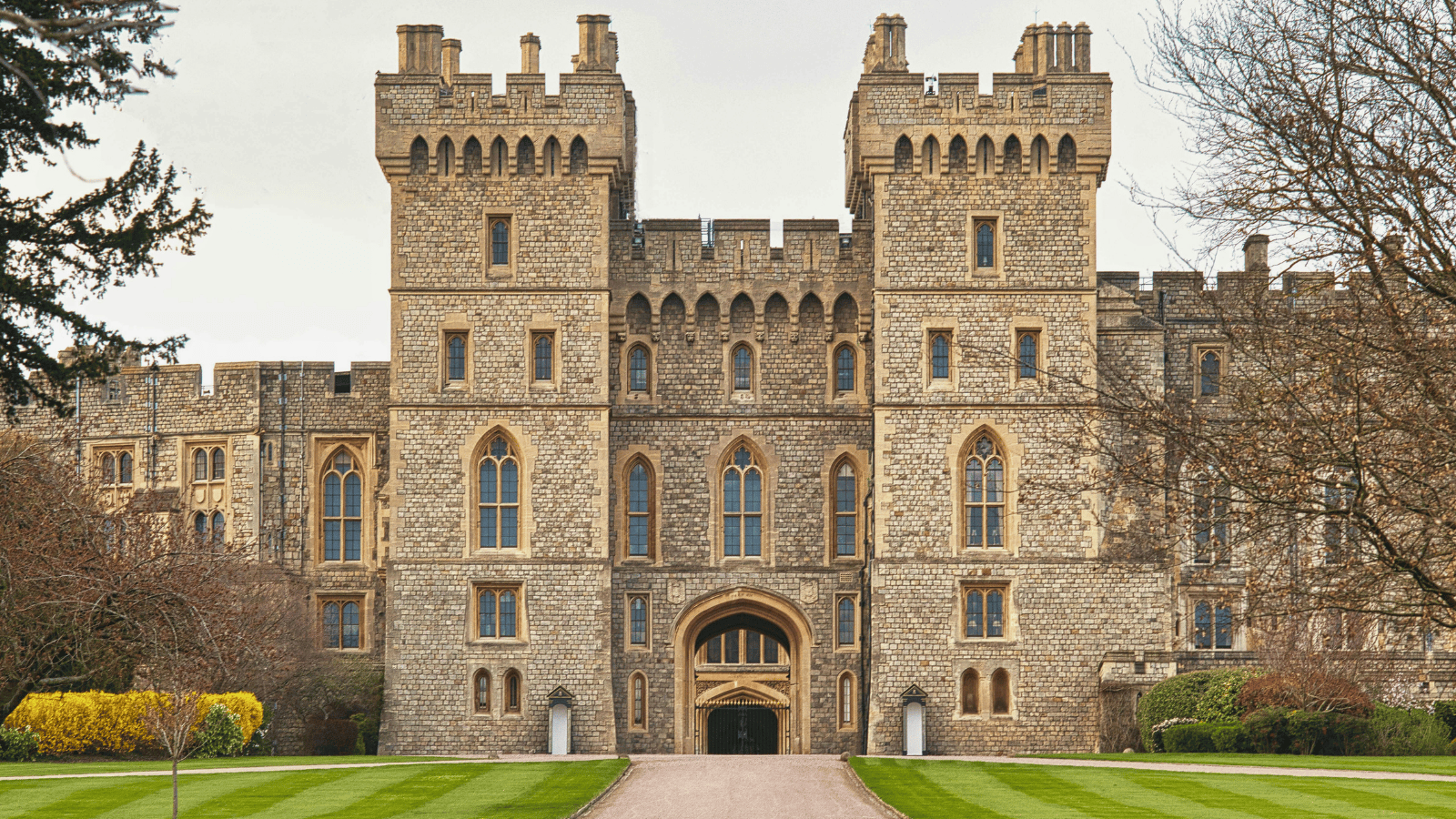






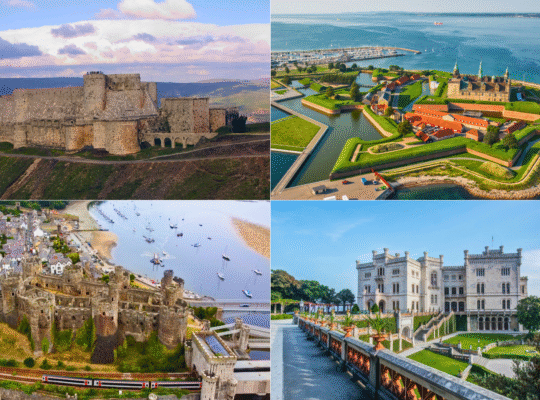


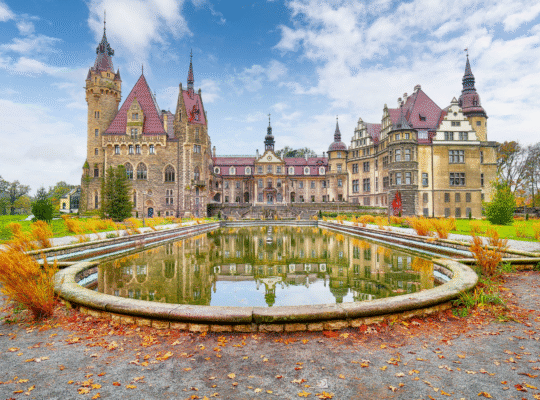
1 Comment